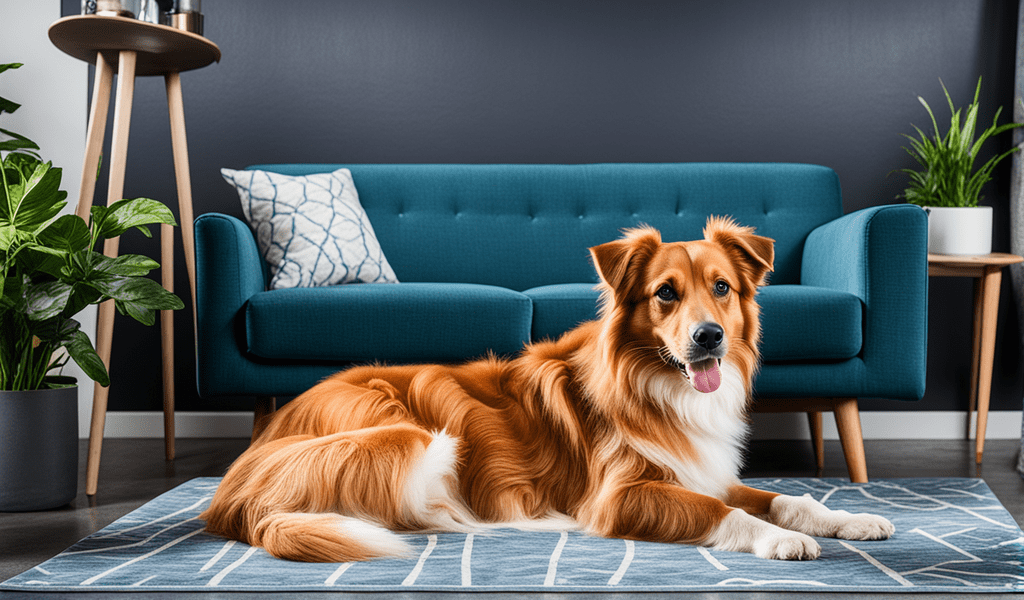
Introduction
For pet businesses, Search Engine Optimization (SEO) is a crucial strategy to reach animal lovers online and establish a strong presence in the pet industry With a growing number of pet owners turning to search engines for pet-related information and products, optimizing for SEO can significantly enhance the visibility of your business and attract more pet enthusiasts In this article, we will explore the significance of SEO for pet businesses and effective strategies to reach animal lovers online
1 Identify Your Target Audience and Pet Niche
Identify your target audience, their pet preferences, and specific pet products or services your business offers Conduct keyword research to understand the pet topics and queries potential customers are searching for

2 Optimize Website Content with Pet Keywords
Optimize your pet business website content by incorporating pet-related keywords naturally into your product descriptions, service offerings, and blog posts Use relevant keywords in s, headers, and meta descriptions
Keyword Research:
Begin by conducting thorough keyword research to identify relevant pet-related terms in your niche. Utilize tools like Google Keyword Planner, SEMrush, or Ahrefs to discover high-impact keywords specific to the pet industry.
Understand Your Audience:
Tailor your content to address the specific needs and interests of your target audience—pet owners, pet lovers, or those seeking pet-related information. Understanding your audience’s preferences helps in creating content that resonates.
Natural Integration:
Integrate pet keywords naturally within your content. Avoid keyword stuffing, and focus on seamlessly incorporating these terms into your text to maintain readability and user engagement.
Comprehensive Content Creation:
Develop high-quality, comprehensive content that thoroughly covers pet-related topics. Address common questions, provide valuable insights, and offer practical advice to pet owners, demonstrating your expertise.
Use Long-Tail Keywords:
Incorporate long-tail keywords related to specific pet queries. Long-tail keywords capture more targeted search intent, making your content more relevant to users looking for detailed information or solutions.
Visual Appeal:
Enhance your pet-related content with visually appealing elements such as images, videos, and infographics. Visual content not only captures attention but also complements your written information.
Optimize Meta Tags:
Optimize meta titles and descriptions with pet keywords to improve your website’s click-through rate from search engine results. Craft compelling meta tags that accurately represent the content on each page.
Internal Linking:
Implement a strategic internal linking structure, connecting relevant pages within your website. This helps users navigate your pet content effectively and signals to search engines the interconnected nature of your content.
Mobile Optimization:
Ensure your website is optimized for mobile devices. Mobile-friendly websites are favored by search engines, contributing to improved search rankings and providing a positive user experience.
Social Media Integration:
Share your pet-related content on social media platforms to increase visibility and drive traffic to your website. Leverage popular hashtags and engage with your audience on these platforms.
Regular Updates:
Keep your pet content up-to-date with the latest trends, health information, and pet care tips. Regularly refresh and republish existing content to signal to search engines that your site is active and relevant.
User-Friendly Experience:
Enhance the overall user experience of your website. A user-friendly design, easy navigation, and clear calls to action contribute to higher engagement and improved search engine performance.
Pet Product Reviews:
If applicable, include pet product reviews in your content. Honest and informative reviews can attract pet owners seeking recommendations and contribute to your credibility in the pet community.
Featured Pet Stories:
Share heartwarming or informative stories about pets. Personal narratives, success stories, or anecdotes can create an emotional connection with your audience and foster engagement.
Pet Health and Wellness:
Provide content related to pet health, wellness, and preventive care. Informative articles on nutrition, exercise, and common health issues can position your website as a valuable resource for pet owners.
Pet Adoption and Rescue Initiatives:
Highlight pet adoption and rescue initiatives. Feature success stories, promote adoption events, and advocate for responsible pet ownership to engage with a community passionate about animal welfare.
Educational Guides:
Create educational guides for pet owners. Whether it’s training tips, grooming advice, or insights into specific breeds, comprehensive guides can attract an audience seeking in-depth information.
Pet-Friendly Events:
Promote and cover pet-friendly events in your content. This could include local pet expos, fundraisers, or community gatherings that cater to pet owners and enthusiasts.
Environmental Responsibility:
If applicable, emphasize environmentally friendly and sustainable practices in pet care. This appeals to an audience concerned about the ecological impact of pet ownership.
Social Responsibility:
Showcase your commitment to social responsibility in the pet industry. This could involve partnerships with animal welfare organizations, charitable initiatives, or promoting ethical pet products.
User-Generated Content:
Encourage pet owners to share their stories, photos, and experiences with their pets. User-generated content adds authenticity and fosters a sense of community among pet enthusiasts.
3 Create Engaging and Informative Pet Content
Create engaging and informative pet content, including pet care tips, pet health articles, and pet product reviews Valuable content can attract pet enthusiasts and establish your business as a reputable pet resource

4 Utilize Long-Tail Keywords
Incorporate long-tail keywords into your content to target specific pet queries and cater to niche pet interests
5 Implement Local SEO for Pet Businesses
Utilize local SEO strategies to target pet owners in your geographical area Claim and optimize your Google My Business listing, and include location-based keywords

Optimize Google My Business (GMB) Profile:
- Claim and verify your Google My Business listing. Ensure accurate and up-to-date information about your pet business, including name, address, phone number, website, and business hours.
Local Keyword Research:
- Conduct local keyword research to identify relevant terms related to your pet business and its location. Use tools like Google Keyword Planner or local SEO keyword research tools to discover high-impact keywords.
On-Page Optimization:
- Incorporate local keywords naturally into your website’s meta titles, meta descriptions, headings, and content. This optimization signals to search engines the relevance of your pet business to local searches.
NAP Consistency:
- Ensure consistency in your business’s name, address, and phone number (NAP) across all online platforms, directories, and your website. Consistent NAP information builds trust with search engines and potential customers.
Localized Content Creation:
- Create content that is specifically tailored to your local audience. This could include blog posts, articles, or pages that highlight local pet events, community involvement, or features on local pet owners.
Online Reviews and Ratings:
- Encourage satisfied customers to leave positive reviews on your Google My Business profile and other review platforms. Respond to reviews, both positive and negative, in a professional and courteous manner.
Local Link Building:
- Build local backlinks by reaching out to local businesses, pet organizations, and community websites. Collaborate on content, sponsor local events, or participate in community initiatives to earn local links.
Mobile Optimization:
- Optimize your website for mobile devices, as many local searches occur on mobile. A mobile-friendly website contributes to a positive user experience and is favored by search engines.
Local Schema Markup:
- Implement local schema markup on your website to provide search engines with structured information about your pet business, such as your location, business hours, and accepted payment methods.
Local Citations:
- Ensure your pet business is listed on relevant local directories and citation sites. This includes platforms like Yelp, Yellow Pages, and local business directories. Consistent citations contribute to local search visibility.https://scholarshipcorners.com/
Location-Specific Landing Pages:
- If your pet business serves multiple locations, create location-specific landing pages on your website. Optimize these pages with local keywords and provide unique information relevant to each location.
Local Social Media Engagement:
- Actively engage with the local community on social media platforms. Share content related to your pet business, participate in local conversations, and use location-based hashtags to connect with local audiences.
Geo-Targeted Ad Campaigns:
- Consider running geo-targeted advertising campaigns on platforms like Google Ads or social media. Geo-targeting ensures that your ads are shown to users in specific geographic locations relevant to your pet business.
Monitor Local SEO Performance:
- Regularly monitor the performance of your local SEO efforts using analytics tools. Track local search rankings, website traffic, and customer interactions to assess the effectiveness of your strategies.
Community Involvement:
- Actively participate in local community events, sponsor pet-related activities, or collaborate with local organizations. Community involvement not only strengthens your local presence but also fosters goodwill.
Voice Search Optimization:
- Optimize your content for voice search, as an increasing number of local searches are conducted through voice-activated devices. Use natural language in your content that aligns with how people speak.
Local Pet-Focused Keywords:
- Incorporate local pet-related keywords into your content. This could include specific neighborhood names, landmarks, or terms related to local pet services and attractions.
Regularly Update GMB Posts:
- Utilize the Google My Business Posts feature to share updates, promotions, and events related to your pet business. Regularly updating GMB posts keeps your audience informed and engaged.
6 Leverage Social Media for Pet Promotion
Leverage social media platforms to promote your pet content, engage with pet owners, and share adorable pet pictures Social media exposure can lead to increased website traffic and brand recognition

7 Encourage User-Generated Content and Pet Stories
Encourage pet owners to share their pet stories and experiences with your products or services User-generated content can build trust and create a sense of community among pet enthusiasts
. Create a Dedicated Hashtag:
- Establish a branded and unique hashtag for your pet community. Encourage pet owners to use this hashtag when sharing their stories on social media platforms, making it easy to track and feature their content.
2. Host Pet Story Contests:
- Organize contests that invite pet owners to share their most heartwarming, funny, or unique pet stories. Offer incentives such as prizes, discounts, or feature opportunities for the winners.
3. Feature Pet of the Month:
- Highlight a “Pet of the Month” or a similar feature on your website and social media channels. Encourage users to submit their pet stories, and select one each month to showcase. This recognition can be a great motivator for participation.
4. Share Customer Testimonials:
- Transform positive customer testimonials into engaging pet stories. Request detailed accounts of their experiences with your products or services and share these narratives across your marketing channels.
5. Create a Pet Community Forum:
- Establish an online forum or community space dedicated to pet owners. Encourage members to share their stories, seek advice, and connect with each other. Actively participate in discussions to foster a sense of community.
6. Host Virtual Storytelling Events:
- Organize virtual storytelling events where pet owners can share their stories in real-time. This could be through live webinars, social media live sessions, or interactive Q&A sessions featuring pet owners and their furry companions.
7. Share Behind-the-Scenes Moments:
- Encourage users to share behind-the-scenes moments of their daily lives with their pets. This could include candid photos, videos, or anecdotes that capture the authentic and unscripted joy of pet ownership.
8. Create User-Generated Content Campaigns:
- Launch specific campaigns that call for user-generated content. This could include themed campaigns such as “A Day in the Life of Your Pet” or “Pet Adventures.” Feature the submissions prominently on your website and social media.
9. Provide Storytelling Prompts:
- Offer storytelling prompts to guide pet owners in sharing their experiences. These prompts can inspire them to narrate specific moments, challenges, or achievements in their pets’ lives, creating diverse and compelling content.
10. Collaborate with Pet Influencers:
- Partner with pet influencers who have a strong following. Encourage them to share their personal pet stories and experiences with your products or services. Their authentic storytelling can resonate with a broader audience.
11. Create a Pet Stories Blog Section:
- Dedicate a section of your blog or website to feature pet stories. Regularly update this section with submissions from pet owners, creating a dynamic and evolving collection of heartwarming and relatable narratives.
12. Highlight Pet Milestones:
- Celebrate and share pet milestones, such as birthdays, adoptions, or rescue anniversaries. Encourage pet owners to contribute stories and photos commemorating these special moments.
13. Engage with Pet Communities:
- Actively participate in existing pet communities on social media platforms. Engage with users by commenting on their stories, asking questions, and expressing genuine interest in their pet-related experiences.
14. Create Pet Storytelling Templates:
- Design templates that make it easy for pet owners to structure and share their stories. These templates can include prompts for details like the pet’s name, breed, and a memorable anecdote.
15. Showcase Diverse Pet Stories:
- Encourage inclusivity by showcasing a diverse range of pet stories. Feature pets of different breeds, ages, and backgrounds to create a rich tapestry that resonates with a broad audience.
16. Express Gratitude and Recognition:
- Publicly thank and recognize participants who share their pet stories. Expressing gratitude for their contributions fosters a positive community spirit and encourages continued engagement.
17. Create Interactive Polls and Quizzes:
- Design interactive polls and quizzes that prompt pet owners to share specific aspects of their pets’ personalities or preferences. This not only encourages participation but also provides valuable insights into your audience.
18. Share Personal Stories from Your Team:
- Humanize your brand by sharing personal pet stories from your team members. This adds a personal touch and reinforces the shared love for pets within your organization.
19. Encourage Cross-Platform Sharing:
- Facilitate cross-platform sharing by encouraging users to share their stories not only on your website or social media but also on their personal blogs or platforms. This expands the reach of their narratives.
20. Create Pet Storytelling Workshops:
- Host virtual workshops or webinars focused on pet storytelling. Provide tips and guidance on how pet owners can effectively share their stories, fostering a community of storytellers.
8 Utilize Video Content for Pet Demonstrations
Utilize video content to showcase pet demonstrations, product usage, and pet training tips Video content can engage pet owners and improve search rankings
9 Partner with Pet Influencers and Bloggers
Partner with pet influencers and bloggers to promote your pet products or services Influencer endorsements can significantly expand your reach within the pet community
Identify Reputable Influencers and Bloggers:
- Conduct thorough research to identify pet influencers and bloggers whose values align with your brand. Look for individuals with a genuine and engaged following in the pet community.
Vet Potential Partners:
- Evaluate the credibility and authenticity of potential influencers and bloggers. Analyze their engagement rates, audience demographics, and the overall quality of their content to ensure alignment with your brand values.
Establish Clear Objectives:
- Clearly define your collaboration objectives. Whether it’s increasing brand awareness, promoting specific pet products, or reaching a new audience, having well-defined goals is crucial for a successful partnership.
Authentic Outreach:
- Reach out to influencers and bloggers with authenticity and a personalized approach. Clearly communicate why you believe a collaboration would be mutually beneficial and how it aligns with their audience’s interests.
Highlight Mutual Benefits:
- Emphasize the benefits of the collaboration for both parties. This could include exposure to a new audience, access to exclusive content or events, or the opportunity to be part of a meaningful pet campaign.
Provide Value to Influencers:
- Offer influencers valuable content, resources, or experiences that align with their expertise and provide genuine value to their audience. The more value you provide, the more likely influencers will be interested in collaborating with you.
Co-Create Engaging Content:
- Collaborate on the creation of authentic and engaging content. This could include blog posts, social media campaigns, videos, or joint events. Leverage the influencer’s unique style and voice to create content that resonates.
Leverage Social Media Platforms:
- Utilize the influencer’s social media platforms to amplify your brand message. Encourage them to create content that showcases your pet products or services, reaching their followers effectively.
Engage in Interactive Campaigns:
- Plan and execute interactive campaigns that involve the influencer’s audience. This could include giveaways, contests, or Q&A sessions, fostering engagement and participation.
Host Influencer Events:
- Organize events or webinars where influencers can share their expertise and engage with their audience. This could be a panel discussion, a live interview, or a collaborative workshop.
Utilize Influencers in Product Launches:
- Involve influencers in the launch of new pet products or services. Their endorsement and authentic reviews can significantly impact your product’s reception in the pet community.
Encourage Influencers to Share Personal Stories:
- Encourage influencers to share personal stories and experiences related to your brand. Authentic storytelling creates a connection with their audience and enhances the relatability of your products or services.
Monitor and Measure Performance:
- Regularly monitor the performance of the collaboration using analytics tools. Track metrics such as reach, engagement, and conversion rates to assess the impact of the partnership.
Express Gratitude:
- Show appreciation for the collaboration by expressing gratitude to influencers. Recognize their contribution and the value they bring to your brand, fostering a positive and collaborative atmosphere.
Build Long-Term Relationships:
- Look beyond a one-time collaboration. Building long-term relationships with pet influencers can lead to ongoing advocacy for your brand, providing sustained visibility in the pet community.
Stay Compliant with Regulations:
- Ensure that influencer partnerships comply with relevant regulations and guidelines, such as disclosure requirements for sponsored content. Transparency is essential for maintaining trust with the audience.
10 Monitor Performance and Adapt
Regularly monitor your pet business’s SEO performance through analytics tools Analyze website traffic, conversion rates, and keyword rankings to refine your SEO strategies and effectively reach animal lovers online
Conclusion
Mastering SEO is essential for food trucks to boost search visibility, engage customers, and thrive in the mobile dining scene. Identify your audience, optimize with keywords, and create compelling content. Use long-tail keywords, implement local SEO, and leverage social media. Collaborate with influencers, share video experiences, and showcase customer testimonials. Monitor and adapt your SEO for ongoing success. Elevate your online presence, attract foodies, and become a sought-after destination.
Visit:https://csspmstimes.com/

One Comment